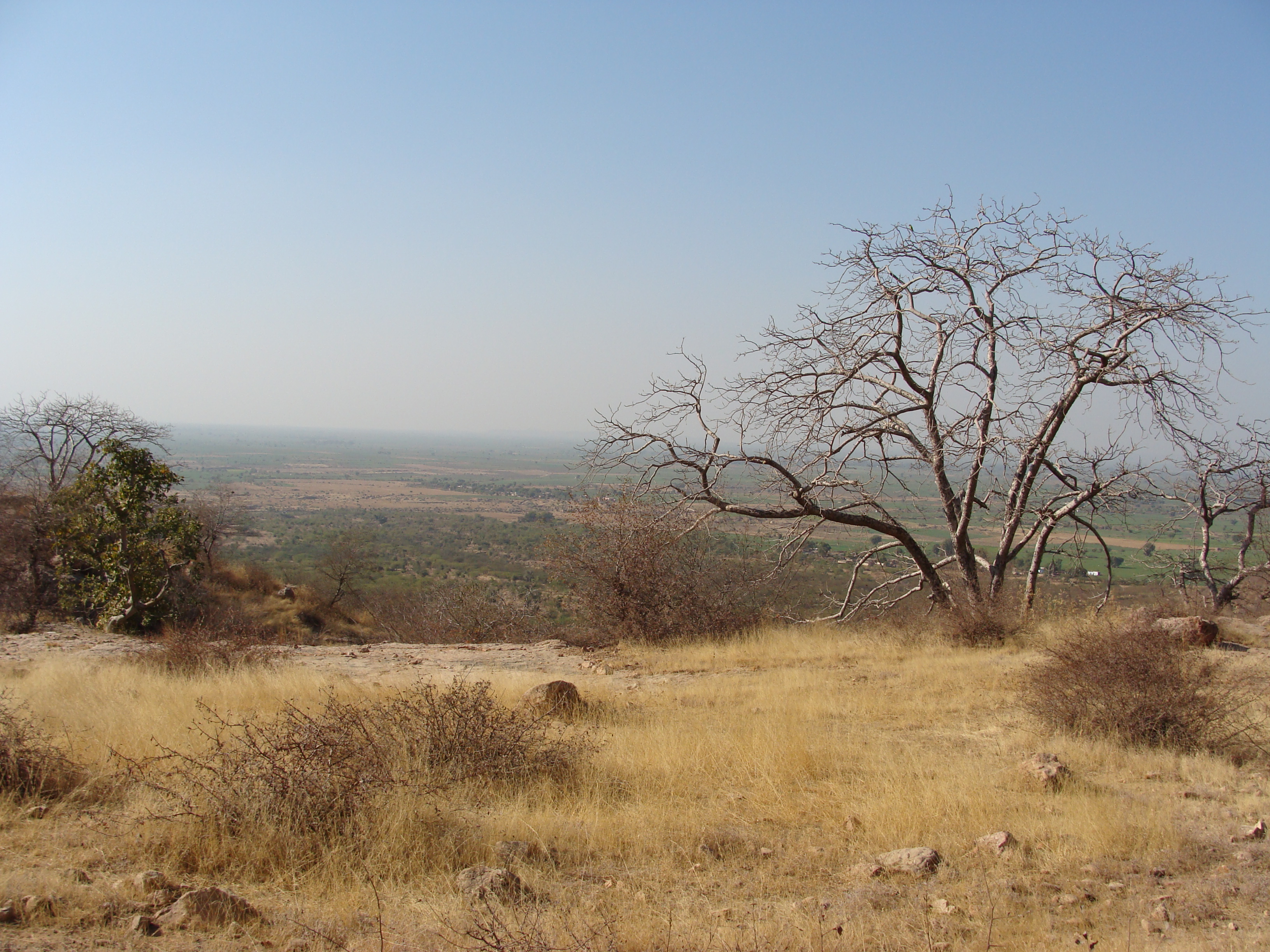Flora and Fauna

The most noticeable tree in the Ranthambore National Park is the 'Dhok' (Anogeissus pendula). It is dominant species and constitutes about 80% of the vegetation cover and found on hill slopes and valleys and maintains luxuriant growth due to better soil formation and water holding capacity. The leaves of the Dhok trees form a favorite diet for the Deer, Nilgai and Antelope. Its height is approximately 10-15 meters. The growth of Anogeissus pendula is generally stunted on plateaus where the residual soil is poor and shallow.
Other most prominent trees in the park are the Banyan (Ficus bengalensis) and Pipal (Ficus religiosa) It is worshipped and also has medicinal uses. The largest Banyan tree of India stands just behind the Jogi Mahal, the hunting lodge in Ranthambore national Park. The Neem (Azadirachta indiaca) tree, which is universally known for its medicinal properties, grows abundantly in the Ranthambore National Park.
Among the fruit trees found in the Ranthambore, the most prominent include the Mango(Magnifera indica), Jamun (Syzygium cumini) also known as the Indian blackberry, Ber (Zizyphus mauritania), and Tamarind (Tamarindicus indica- popularly called Imli) known for its pulpy fruit used in the preparation of pickles. In addition, there are many trees such as Chhila (Butea monosperma, the flame of the forest), which sets the forest alights with the bright orange red color, offering a spectacular sight to park's visitors.
Jamun (Syzygium cumini) also known as the Indian blackberry, Ber (Zizyphus mauritania), and Tamarind (Tamarindicus indica- popularly called Imli) known for its pulpy fruit used in the preparation of pickles. In addition, there are many trees such as Chhila (Butea monosperma, the flame of the forest), which sets the forest alights with the bright orange red color, offering a spectacular sight to park's visitors.
Other important flora in the Ranthambore include the Babul (Accasia nilotica), Gurjan (Lannea coromandelica), Gum (Sterculia urens), Kadam (Authocephalus cadamba), Khajur (Phoenix sylvestris), Khair (Accacia catechu) This is one of the most common trees in Ranthambore and is regarded across north India as a very valuable tree, since extracts from its bark are the mixture that make the paste katha for paans. The bark is frequently chewed by porcupines who seem to have an addiction to this tree in Ranthambore., Kakera (Flacourtia indica), Karel (Capparis decidua), Khimi (Manilkara hexandra), Kikar (Acacia nilotica), Mahua (Madhuca indica), Kulu (Sterculia urens), Ronj (Acacia leucophloea), Salar (Boswellia serrata) and Tendu (Diospyrous melanoxylon) The leaves of this tree are much in demand for making bidis (hand rolled cigarettes), the timber is also valuable. Tendu trees are found in large numbers near Sultanpur-ki-kui and beyond. A favorite fruit of sloth bears. Khus grass (Vetivaria zizznioides) The roots of this grass yield an aromatic oil known as vetiveria oil , a large quantity of which is exported from India . The roots are woven into curtains , and when moistened they cool and scent the air at the same time. The edges of the lakes in Ranthambore are full of Khus grass. This is the grass that is used to make boxes and containers that are available in the old part of Sawai Madhopur town. The aquatic flora in the Ranthambore National Park includes a variety of lovely flowers such as lotus and water lilies.
Fauna in Ranthambhore : Ranthambhore’s unique climatic and vegetation features have given rise to forests that are dry and open with little and stunted ground cover. This makes wildlife viewing relatively easier on the safari. Ranthambhore is virtually an island rich in fauna. Tiger, at the apex of the food chain, lord of the kingdom in a subtle way. Solitary by nature, it operates in the stealth. Therefore tiger sightings, frequent as they are, are always a matter of chance. However even evidences of tiger's activities are very exciting. Other kinds of cats found in Ranthambore are Leopard, Caracal, Leopard cat, Fishing cat and Jungle cat. The other large predators include Sloth Bear, Striped Hyena, Jackal, Desert fox, Palm civet, common mongoose, crocodile, python etc. There are two species of antlers the spotted deer (chital), and Sambhar deer and two kinds of antelopes namely the Indian Gazelle (chinkara ) and the Bluebull ( Nilgai ).
Besides tiger, there are many other animals to observe, understand and enjoy. Elegant and graceful spotted deer, huge sambhar deer, crocodiles basking around the lakes, vultures soaring in the sky, Serpent eagles scanning the ground from its perch or the kaleidoscope of waterfowl at the pools are all the interest for a visitor with sensitivity. Ranthmbhore is a great experience in totality and Jungle safari will enhance your experience in wildlife. Ranthambore is also rich in bird life with around 300 species of birds. Infact for a keen bird watcher Ranthambore and the surrounding area is a paradise. Some interesting resident species of birds are large Cormorant, Painted Spurfowl, Sarus Crane, Bronzed winged Jacana, Sandpiper, Kingfisher, Nightjar, Painted Sandgrouse, Great horned owl and many more regular winter migrants which come from their nesting ground north of Himalayas to Ranthambore and surrounding areas.